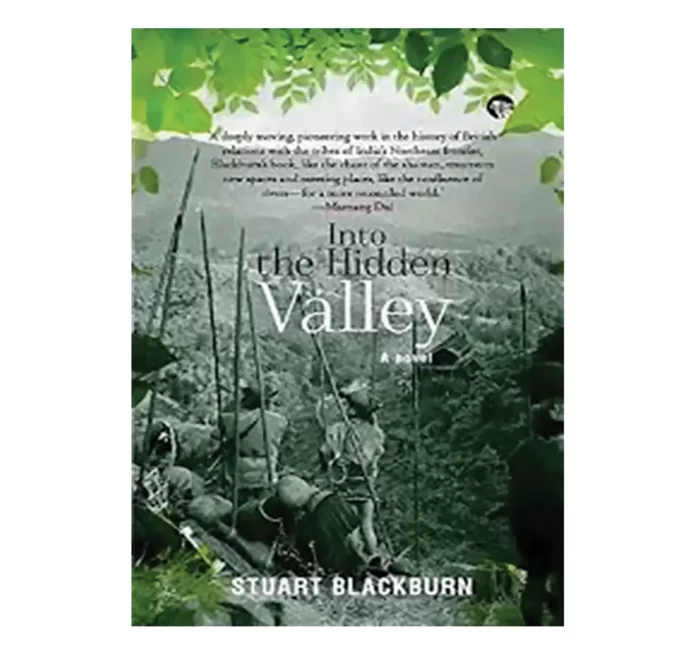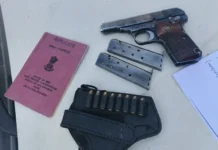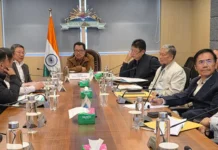Tribal Bookworms
[ Dr Doyir Ete Taipodia ]
Hidden histories do not remain hidden – they linger in memories and stories, waiting to be rekindled and retold. Stuart Blackburn’s Into the Hidden Valley (2015) does just this – it retrieves hidden histories and reclaims emotional landscapes from collective memories and oral stories. The novel, categorised as historical fiction is about the Apatani Valley’s first encounter with the ‘halyangs’ – the outsiders. In 2016 the novel won the United Kingdom’s MM Bennetts Award for Historical Fiction. Here at Tribalbookworms, a Britain-based author takes the hot seat for the first time. This naturally raises questions about outsider versus insider perspectives, especially in the context of literary writings from Arunachal Pradesh. Yet it also highlights the valuable contributions of non-native writers whose works have meaningfully shaped the literary fabric of the state. Literary bodies must be accommodative and inclusive in their scope. It must be receptive to works from diverse authors, both native and non-native, opening up possibilities to read and write about a wide range of perspectives on Arunachal, its history, culture and people. Passing over a novel like this would be a faux pas, considering its rich subject matter of colonial history, the intricate dynamics of tribal resistance, and a narrative filled with sensitivity, striving to authentically depict Apatani life and culture.
One cannot miss the grudging admiration for the Apatani people and disbelief at the discipline and spirit of resistance that the British never anticipated. The valley reminds them of Scotland, and the neat rows of paddy are as beautifully laid as any British field. Blackburn’s novel does in fiction what Furer Haimendorf’s ethnography does in scholarship. Both authors have done extensive research on the Apatani tribe and produced exceptional works, both scholarly and creative. While Haimendorf’s anthropological study of the Apatani tribe conducted during colonial times reflects the socio-cultural aspects, Blackburn’s novel engages with colonial history while reinterpreting and challenging the colonial version of history.
Recently, a renewed and invigorating resurgence of colonial history in Arunachal has gained significant momentum. The Unsung Hero project, supported and funded by the state government, has garnered support from different quarters. The report ‘Unsung Heroes of Arunachal Pradesh: Tribal Resistance Movements’, prepared by the department of history at Rajiv Gandhi University (RGU), has highlighted many such heroes from all corners of the state. History is being rewritten, and heroes are being brought from the shadows into the spotlight. Eulogies in the form of songs, poems, and theatre are being performed. Various creative expressions are giving shape to lost stories and lived lives. These acts of reclamation, through hard documentation and creative expression, reveal a whole new past that was previously hidden, overlooked, or silenced. It is one such project that Blackburn’s novel undertakes and accomplishes. It narrates the tragic unfolding of the historical encounter of the Apatani with the British, which is followed by a punitive expedition. Into the Hidden Valley, is inspired by certain historical events, which are well explored in Blackburn’s own research article titled Colonial contact in the ‘hidden land’: Oral history among the Apatanis of Arunachal Pradesh available online.
He writes about two key events: the first-ever British visit to the Apatani Valley in 1897 and an Apatani raid on a military outpost at Joram in 1948. Blackburn was surprised to find that both events were still widely remembered by many Apatani people and remained part of their oral knowledge. However, the raid of 1948 was nowhere recorded in official accounts or any written documents. Such omission was not uncommon during colonial times, where the histories of natives were often erased or distorted to suit colonial interests. Into the Hidden Valley revolves around two central characters and their sons: George Taylor, a British officer, and his son Charles; and Gyati, a nyibu from the Hage clan, and his son Komo. George, a 20-year-old from England, and Gyati, a boy destined to become a shaman, are both filled with dreams and aspirations, forging their own personal paths. Their lives inevitably clash rather tragically, leading to loss and death. In this tale of tribal resistance the story also hinges on a more visceral exploration of the possibilities of ‘kinship’ between strangers — had they encountered each other as equals under different circumstances.
George’s hubris — to etch his name in history and to be a ‘hero’ in the eyes of his son Charles — goads him to be the first British to ever venture into the ‘hidden valley.’ This sets into motion a series of events culminating in deaths and untold trauma for the Apatani community in the novel. The deaths of young men and the burning of villages by the British get embedded in the tribe’s collective memory, gradually woven into their social conversations. These memories are preserved not only in their oral stories but also inscribed into the very landscape of the valley where certain locations stand as silent witnesses to the past.
George Taylor is killed in the Shillong earthquake of 1910. In its aftermath, his son Charles, discovers a secret diary of his father, revealing the execution of twelve Apatani youths carried our by the British. His father was complicit as the officer-in-charge. In the official version written by George, the deaths are completely erased. Failures of communication occur on many levels. For instance, the punitive expedition and its aftermath represent a broader failure of communication between individuals and societies, each struggling to understand the other. Gyati’s fascination for the ‘halyang’, for a world that lay beyond the valley, captured his imagination. He is particularly captivated by George’s writing box – “They have writing; ours got lost,”, he remarks. The script has always been a source of fascination for different tribes, and the fact that almost every tribe has a story associated with the loss of a script suggests a longing for a lost treasure they once possessed. However, the absence of a script is by no means a lack or deficiency. In fact, orality has always been central to the history of every society. It requires not just remembrance but also the mind’s eye, the ability to visualise memory and relive events. This is what ensures the continuity of stories from generation to generation. Yet, in the novel the pen alongside the gun carries more weight and the British gain the upper hand.
Peace eludes even years after the massacre. Charles’s journey to the Apatani Valley 20 years later is a son’s guilt burdened by his father’s sin. Gyati’s penance is a father’s guilt burdened by his son’s death. The demands are heavy on both: Gyati’s inquisition about his son’s death and Charles’s acquiescence of his father’s complicity.
The novel is a must-read, not only for its artistic merit but also for its oral and historical depth. It astutely highlights that truth endures in one form or another. If official records erase acts of murder, they remain etched in the memory of victims, subsumed into the collective consciousness and persist in defying time and forgetfulness. While the novel may fictionalise certain events, it is not far removed from many such fractious occurrences in history. When I first read this novel, probably around 2017, I was eager to share the story with an Apatani friend of mine. She hadn’t heard of the novel, but what she shared sent chills up my spine as it made the whole account feel uncannily real. She vaguely recalled stories of her grandmother, which had been passed down from her parents and grandparents. These accounts told of how, in days gone by, their people were forced into porterage by the ‘halyangs,’ made to carry sacks of pumpkins, salt, and other goods to the military outpost at Joram. To lighten their load, they would ingeniously make holes in the sacks so the salt would spill out. Forced porterage also caused resentment toward the ‘halyangs’. She also recalled that her grandmother would warn them to pass quietly by certain groves and to avoid crossing them after dark due to lurking souls. How much of this is connected to what happened with the British remains uncertain, but the fact that such stories are part of their oral stories certainly adds fuel to the fire.
The possibility that reality and fiction can come together to create such a heart-rending story — from the fringes of the British Raj, centred on the not-so-isolated lives of tribal communities encountering paradigm – shifting events — leaves us wondering what more can be explored in this way. How many more such stories remain to be written, unearthed, and narrated? Surely, the possibilities are endless. (Dr Doyir Ete Taipodia is Assistant Professor, English Department, RGU. She is also a member of the APLS and the Din Din Club.)




